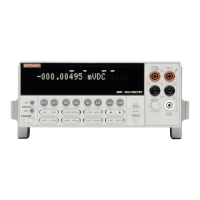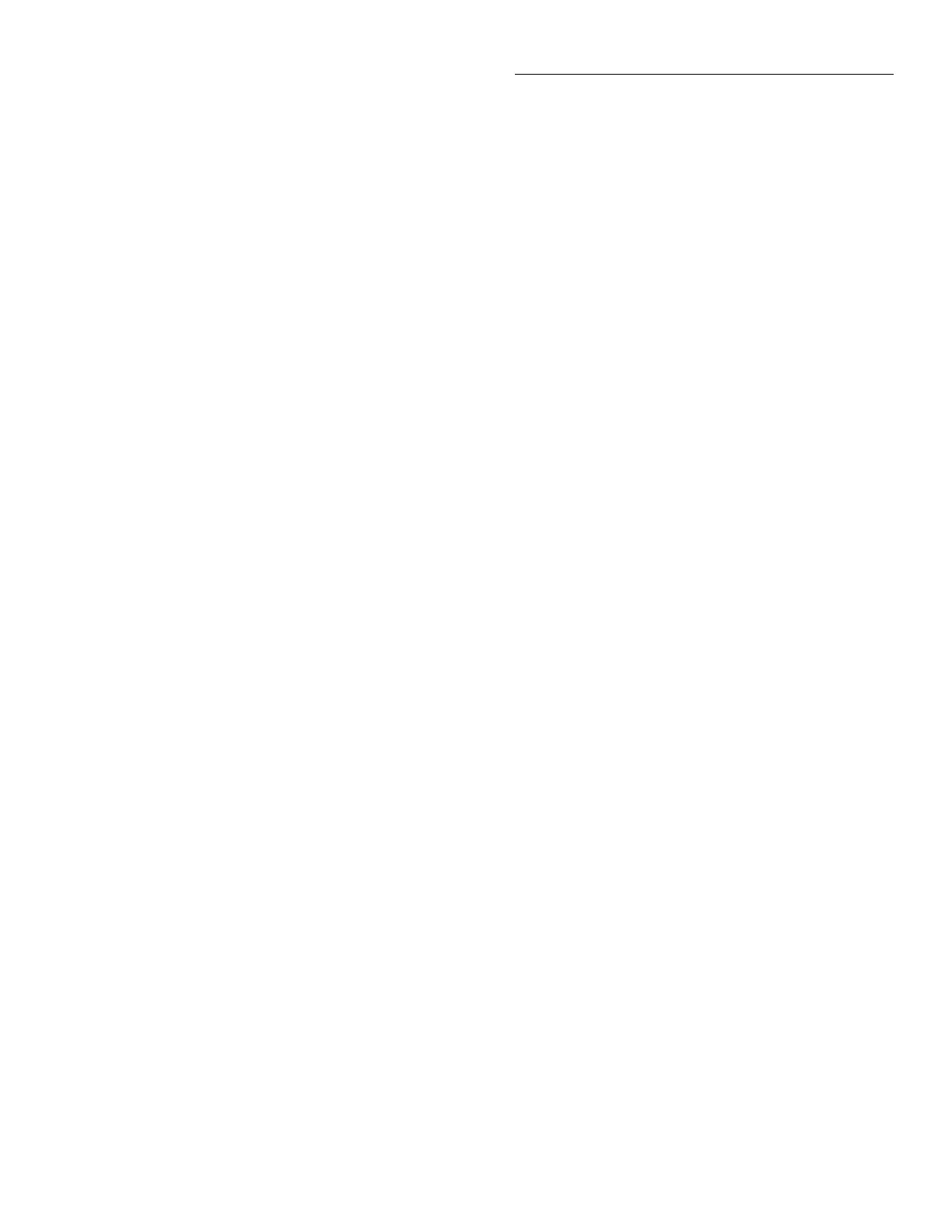IEEE-488 Reference
4-69
[:DATA] <n>
:CALCulate3:LIMit[1]:UPPer[:DATA] <n> Specify upper LIMIT 1
:CALCulate3:LIMit[1]:LOWer[:DATA] <n> Specify lower LIMIT 1
:CALCulate3:LIMit2:UPPer[:DATA] <n> Specify upper LIMIT 2
:CALCulate3:LIMit2:LOWer[:DATA] <n> Specify lower LIMIT 2
Parameters
<n> = -9.999999e35 to +9.999999e35 Specify limit value
= DEFault Set specified upper limit to 1
Set specified lower limit to -1
= MINimum Set specified limit to -9.999999e35
= MAXimum Set specified limit to +9.999999e35
Formats
:calc3:lim:upp <n> :calc3:lim:low <n>
:calc3:lim2:upp <n> :calc3:lim2:low <n>
Defaults
Power-up Saved power-on setup
*RST Upper limits = 1
Lower limits = -1
:STATus:PRESet Upper limits = 1
Lower limits = -1
Query
:UPPer? Query specified upper limit
:UPPer? DEFault Query *RST default upper limit
:UPPer? MINimum Query lowest allowable upper limit
:UPPer? MAXimum Query largest allowable upper limit
:LOWer? Query specified lower limit
:LOWer? DEFault Query *RST default lower limit
:LOWer? MINimum Query lowest allowable lower limit
:LOWer? MAXimum Query largest allowable lower limit
Short-form formats: :calc3:lim:upp? :calc3:lim:low?
:calc3:lim:upp? xxx :calc3:lim:low? xxx
:calc3:lim2:upp? :calc3:lim2:low?
:calc3:lim2:upp? xxx :calc3:lim2:low? xxx
where; xxx = def, min or max
Response message: -9.999999e35 to +9.999999e35
Description
These commands are used to set the upper and lower limits for LIMIT 1 and LIMIT 2. The actual
limit depends on which measurement function is currently selected. For example, a limit value
of 1 is 1V for the volts functions (DCV or ACV), 1A for the current functions (DCI or ACI), 1
Ω
on the ohms functions (
Ω
2 or
Ω
4), and 1° (C, F or K) for the temperature function (TEMP). The
upper limit value is not range sensitive. An upper limit of 2 for DCV is 2V on all measurement
ranges. Note that limit tests cannot be performed on frequency (FREQ) measurements.
Programming example
10 OUTPUT 716; “:calc3:lim:upp 10; upp?”
20 ENTER 716; A$
30 PRINT A$
40 END

